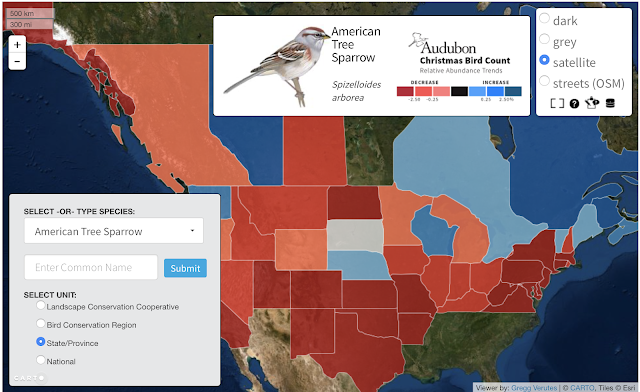Where is the Monroe, MI CBC Count Circle ? – The count has been conducted in Monroe County for over 55 years and ESBA has hosted the count for over 30 years (including this year).
Where is the Count Circle? – The center of the Monroe count area is the junction of M-125 and Woodchuck Creek near LaSalle. The count circle is 15 miles in diameter (~177 sq. miles) and is divided into 8 Areas.
Area 2 - Consumers Power Plant and Erie Gun Club to I-75
Area 3 - Wood Road on the north east to US-125. US-125 south to Erie Rd. Erie Rd. east to I-75; I-75 south
Area 4 - LaPlaisance Rd east to North Otter Creek Rd to Lake Erie. Telegraph south to Wood Road and Wood Road east to US-125. US-125 south to Erie Rd. Erie Rd. east to Lake Erie
Area 5 - Front St. along S side of River Raisin Rd. from Telegraph Rd. to Lake Erie. Telegraph Rd. S to LaPlaisance Rd. E to North Otter Creek Rd. to Lake Erie
Area 5a - Monroe Power Plant
Area 6 - Front St. along S side of River Raisin from Telegraph Rd. to Lake Erie. Telegraph Rd. N to Nadeau Rd.
Area 7 - Dunbar Rd to Telegraph Rd. Telegraph Rd. N to Nadeau Rd.
Area 8 - Dunbar Rd. to Telegraph Rd. Telegraph Rd. S to Wood Rd. then W on Wood Rd.
Thursday, November 8, 2007
When?
The CBC is held annually between December 14 and January 5.
The Monroe CBC will be held Sunday, December 15, 2024. The official period is 12am to 11:59pm but we usually quit by 5pm.
Count week (3 days before and 3 days after the count) for the Monroe CBC will be 12/12 to 12/18. During this period any additional species not seen on count day can be added to the totals. PLEASE document WHEN and WHERE. Make sure to include a rare-bird form if the species requires it!
What is the CBC and Why is it important?
What is the CBC? – It is the largest conservation effort known to mankind! Over 50,000 observers across the Western Hemisphere count and record as many individuals and species over a 24-hour period (Midnight to Midnight).
Why is it important? – The count period of December 14 to January 5 each marks the end of the fall migration and provides an opportunity to monitor trends in early winter bird populations. Information regarding the Audubon Christmas Bird Count can be found here.
Wednesday, November 7, 2007
Objective
Objective? – Participants try to cover as much of the circle as possible within a 24-hr. period, counting indivdual birds and species within their assigned section. At the end of the day results are tallied and compiled into a master list, which is then sent to the national database. Data collected will be used to monitor species population trends and helps to identify those populations of concern.
Yesterday and today!
On Christmas Day 1900, Ornithologist Frank Chapman proposed a “Christmas Bird Census” as an alternative to the annual Christmas Side Hunt, where people engaged in contests to see who could shoot the most birds and bring in the largest pile of feathers. Thanks to his efforts, the first CBC was conducted among 27 birders in 25 count circles ranging from Toronto, ON to Pacific Grove, CA. Total species for the entire count = 90.
Today? – The CBC data is used to monitor trends in species distribution and abundance. An example is the American Tree Sparrow shown above. If you go to the NAS CBC Website it is possible to follow species trend for specific areas:
https://www.audubon.org/conservation/where-have-all-birds-gone
Subscribe to:
Posts (Atom)





